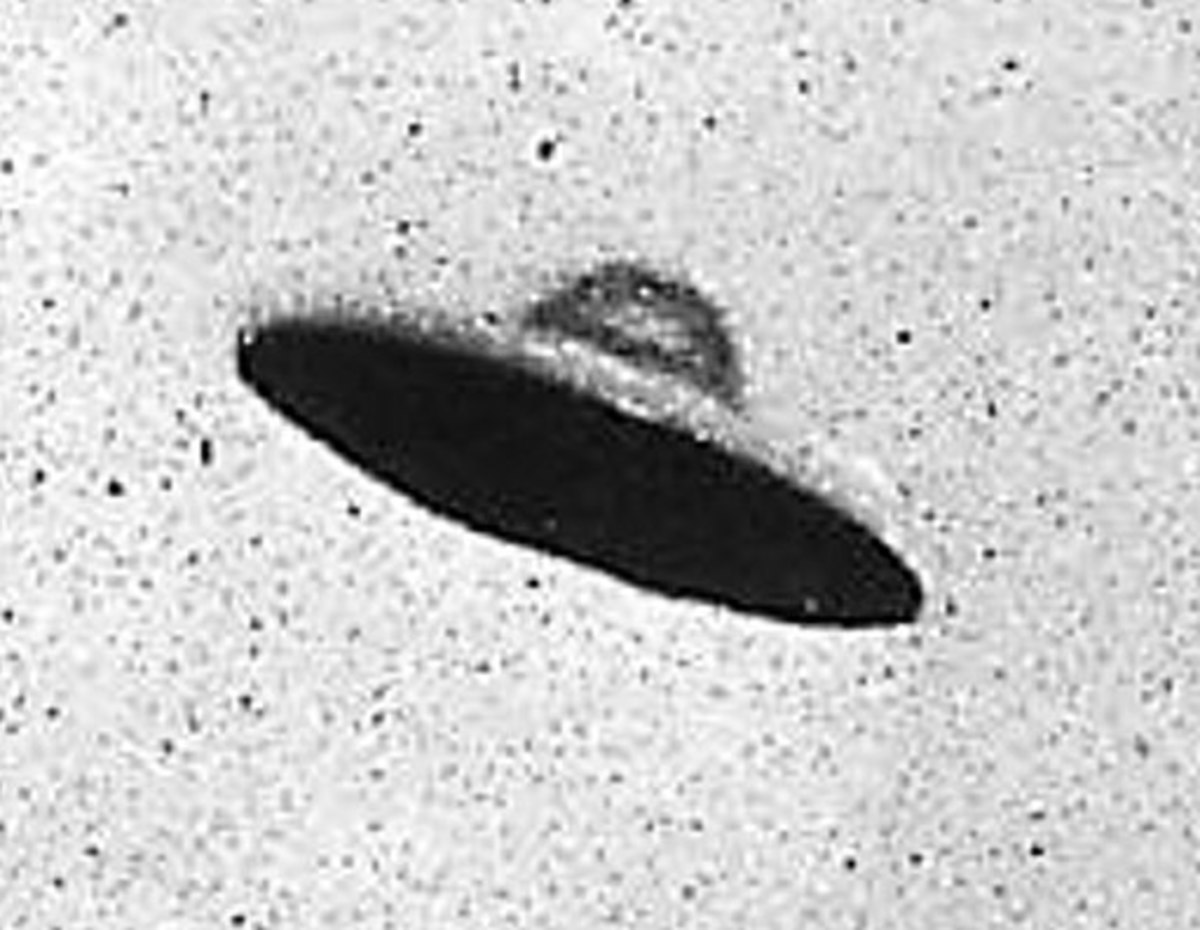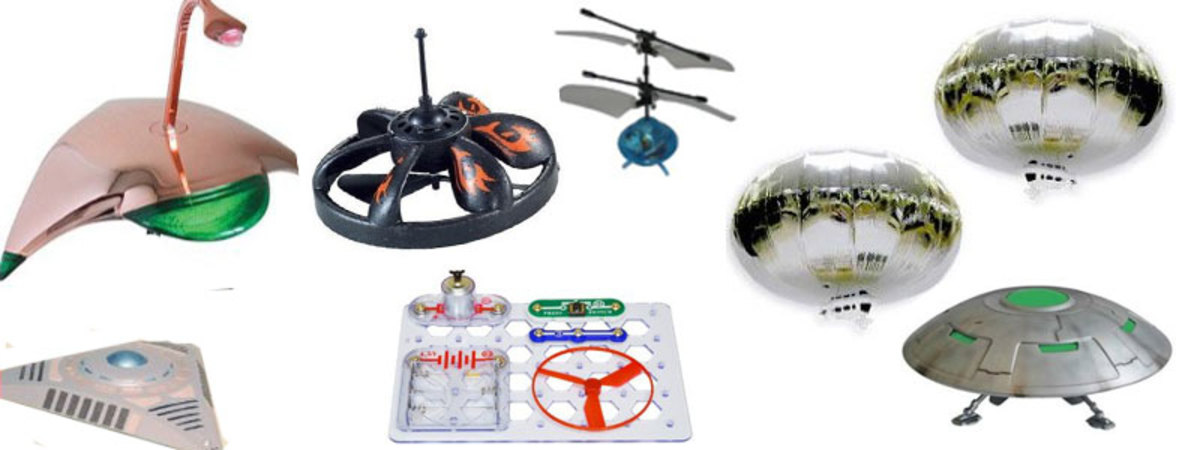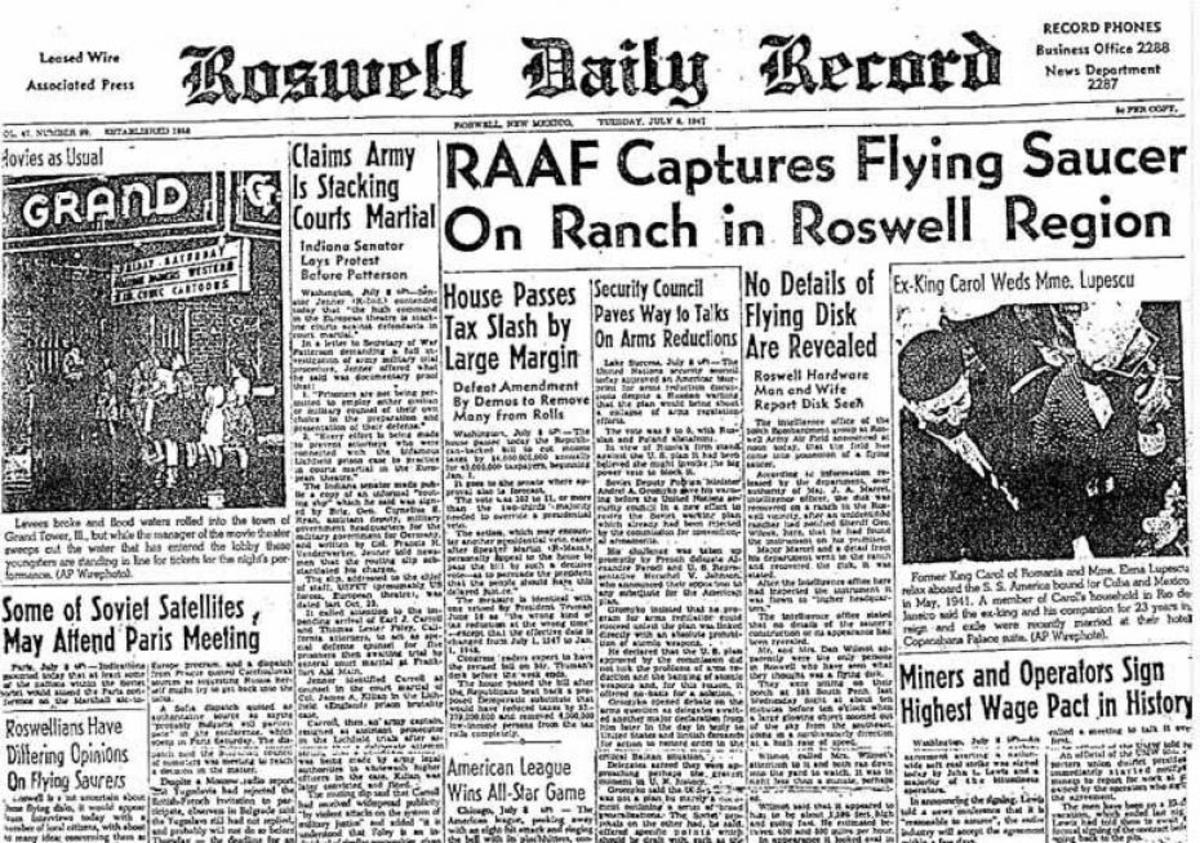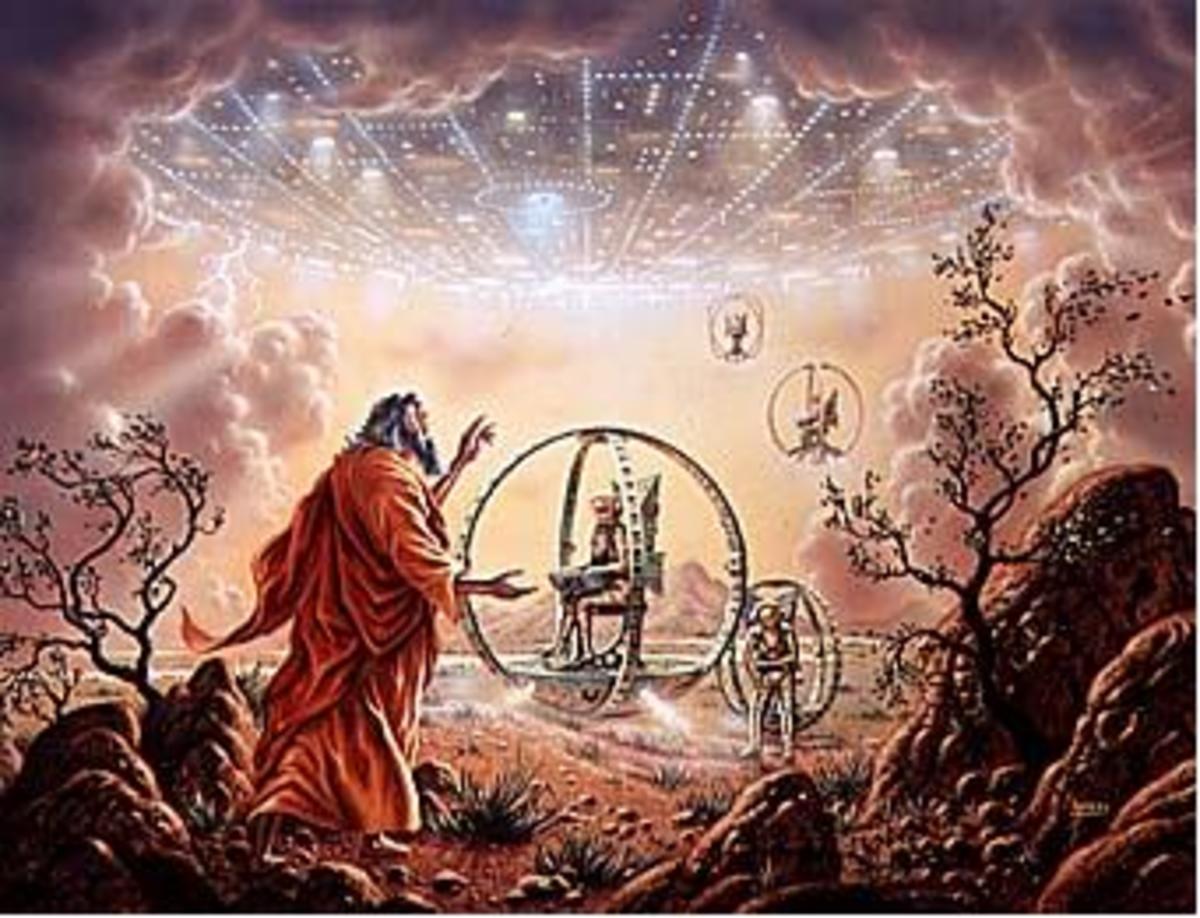Who Were the Real Men In Black?
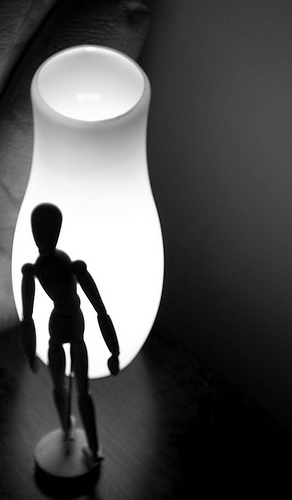
The Men Behind the Men in Black
As of this writing, the popular movie franchise Men In Black is releasing its third episode.
As I was thinking about whether to spring for a movie ticket or wait until the movie comes to cable TV, I realized that an entire generation has now grown up with the idea that the Men In Black (or MIB for short), are just a colorful urban myth tied to ufology.
On the other hand, people who are deeply involved in ufology and Fortean lore may believe that the Men in Black are quite real, and that the government has definitely been aware of them for decades.
What most people today don't realize is that two (now obscure) pulp writers from the 1950s are almost entirely responsible for the entire Men In Black phenomenon.
What's more, these two writers roughly resemble (in temperament anyway) the two main characters in the movie series, played by Will Smith and Tommie Lee Jones.
These two men are Gray Barker and John A. Keel.
The story of their intertwining lives is even weirder than the MIB they discovered or invented.
Which is it?
Discovered, or invented?
If you figure out the answer, please let me know.
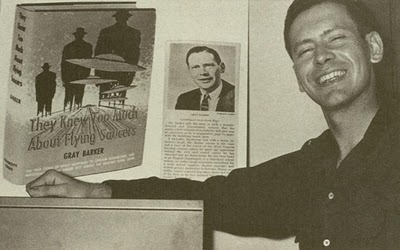
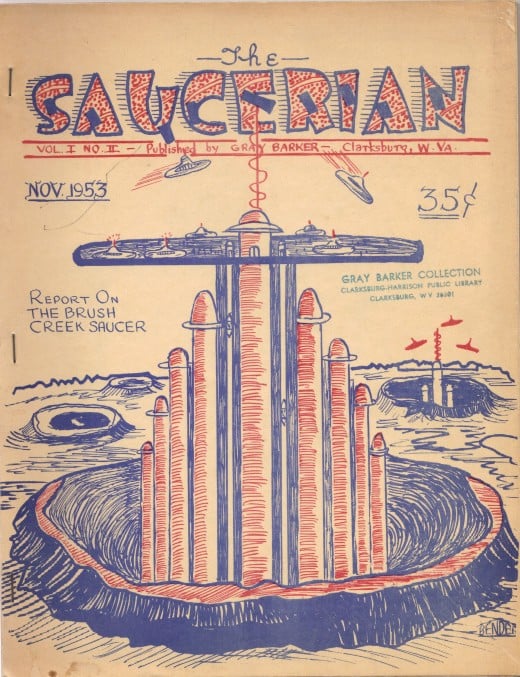
Gray Barker, the Real Will Smith
Gray Barker was born in Riffle, West Virginia in 1925 and graduated from Glenville State College in 1947. He was working as a theater booker in 1952 when he started collecting reports of the Flatwoods Monster UFO incident in Braxton County, WV.
True to his name, Barker had a bit of P.T Barnum in him and was skeptical of the paranormal his entire life. An affable prankster, Barker first began writing regular articles about the paranormal for Albert K. Bender's Space Review, the publication arm of Bender's Flying Saucer Bureau.
Albert K. Bender was a very weird guy by any account. He was able to hold down a job, but spent most of his free time living in his step-father's attic, delving into the occult and having seizures.
Bender was prone to migraine headaches which were followed by altered states of consciousness that included strange sulfurous smells, mild to moderate hallucinations, and mental and emotional confusion.
He rarely lost consciousness, but his ordinary life was punctuated by extraordinary events of high strangeness.
It was during these seizures or spells that Bender was visited by aliens, MIBs, and was even taken on wild impossible journeys, including a trip to Antarctica guided by three MIBs, where he supposedly learned 'the truth' about UFOs.
Today, Bender would likely be diagnosed with epilepsy, a common brain disorder that manifests in no less that 40 different forms, but during the 1950s his physical symptoms were unexplained and seemed, if anything, to add credibility to his beliefs.
Bender never had a girlfriend, and regularly went to the local theater where Barker was lining up bookings. The two men quickly became friends.
In 1953 Bender very suddenly ended publication of the Space Review and dissolved the Flying Saucer Bureau, claiming that he had been shut down by nefarious "higher sources."
In 1956, Gray Barker published Bender's experiences with the Men in Black in the book, They Knew Too Much About Flying Saucers. The book is the first ufology treatise in which the Men in Black appear, and is based almost entirely on Bender's seizure experiences.
According to Bender, and reported by Barker, the MIB travel in groups of three, wear black suits, hats, and sunglasses, and drive around in big, out-of-date black cars.
In 1962, Bender and Barker expanded their analysis of the MIB in a second book, Flying Saucers and the Three Men, by hypothesizing that the MIB were themselves aliens disguised as FBI agents.
Although, according to surviving friends and relatives, Gray Barker saw the UFO craze as an ongoing joke, he also saw it as an excellent way to make some money. He never thought twice about exploiting people like Bender, and in fact sought them out, publishing their stories as fact.
After Bender shut down the Flying Saucer Review , Barker started his own publication, the Saucerian, in which he published first hand UFO and contactee accounts by anybody who told a good UFO story and actually believed it.
First person accounts of UFO experiences were fairly new during this time, which previously had only seen such material published as fantasy and entertainment in pulp fiction publications like Amazing Stories and Weird Tales.
In publishing first hand accounts as fact, Barker was at the forefront of the reality-as-entertainment movement that now dominates television, using as his sole criteria for publication not whether the tale was true, but whether or not it was far-out and interesting.
In other words, if "the truth was out there," Barker did not care about it.
Barker was also not above inventing material out of thin air to flesh out his books, or pranking the contactees and marginal experiencers whose stories he printed. For instance, in 1957, with the Saucerian 's editor Jim Moseley, Barker sent a letter to famous UFO contactee George Adamski on State Department Stationary with a DC postmark that said:
"The Department has on file a great deal of confirmatory evidence bearing out your own claims… While certainly the Department cannot publicly confirm your experiences, it can, I believe, encourage your work."
They signed the letter "R.E. Straith, Cultural Exchange Committee" and stamped it with an official government seal. Even with all that, the letter looked bogus. The Cultural Exchange Committee? There was no such committee.
Shortly after receiving the letter, Adamski began to wave it around publicly as evidence that his claims of contact were real. Whether or not he knew it was a hoax perpetrated by Barker is an open question, but one thing that is NOT a topic of contention is the FBI's reaction.
The FBI did not appreciate the prank, and paid a visit to Barker shortly thereafter.
What happened at this visit we don't know, but fairly decent evidence suggests that during the late 50s and early 60s government intelligence agencies like the FBI were very concerned about the manipulation of belief about the US government by pranksters like Barker and disturbed persons like Bender.
Ironically, amid all the hocum and madness, Barker really did attract the attention of government intelligence agencies, who really did visit him. He might have created the MIB as a near-hoax, but in so doing, real Men in Black came knocking on his door.
And they weren't laughing.
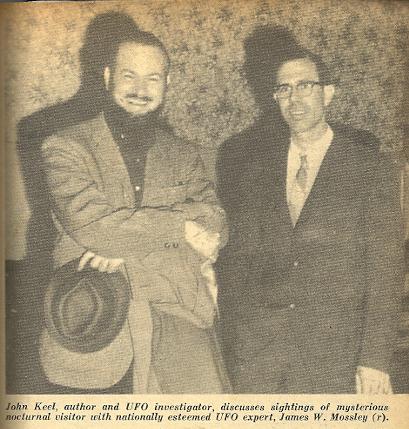
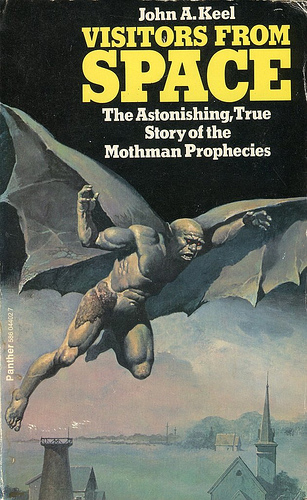
John Keel, the Real Tommie Lee Jones
John Keel was five years younger than Gray Barker and not inclined to pranks or hoaxing, although he did start out as a professional magician and world adventurer.
While Keel's friends described him as a warm and often misunderstood man, Keel definitely had a well-developed dark side and for the most part is remembered as dour and suspicious, not unlike Tommie Lee Jones's character in the movie series.
He is most famous for connecting UFO phenomena to occult manifestations like ghosts, poltergeists, and cryptids, an idea he first presented in detail in his book, The Mothman Chronicles. Keel saw the phenomena as paranormal and menacing, and did not share Gray Barker's sense of humor about it.
After serving in Korea, mostly as part of the Armed Services Network (radio), Keel travelled the world looking for Eastern traditions of magic and mystery, supporting himself by sending back stories to his agent in the U.S., who found they were easily sold to men's adventure magazines.
In 1966, Playboy Magazine commissioned him to write an article about UFO phenomena, but unhappy with his final submission, published a text by ufologist J. Allen Hynek instead.
If I had to guess at the reason for the rejection, I'd wager that Keel's insights did not match the technological fascination with UFOs shared by the general public, who very much wanted to hear about real ETs flying around Earth in real silver spacecraft. The occult was 'out', the ET hypothesis was very much 'in'.
After researching UFOs for Playboy, Keel became hooked on the topic and continued to research UFOs and UFO experiences, observing that the phenomena tended to occur most often on Wednesdays and more often in certain parts of the U.S. than in others.
These concentrated numbers of sightings came to be known throughout the UFO community as UFO 'flaps', a term that is still used today.
Gray Barker and John Keel developed a strange relationship around the topic of UFOs, sometimes cordial, always fiercely competitive, occasionally downright acrimonious. Barker and Keel worked concurrently on the Mothman phenomenon in Point Pleasant, West Virginia, refusing to share their information with each other and each accusing the other of various inaccuracies and exaggerations.
Though Barker beat Keel to the presses with his Mothman book The Silver Bridge, published in 1970, it is Keel's work in The Mothman Chronicles (1975) that is remembered and to this day remains the 'go-to' text for Mothman info.
The two books are similar in major themes but very different in regard to significant details and conclusions reached. Keel writes extensively in his version about his own encounters with the MIB while researching Mothman, and ties the appearance of Mothman directly to an outbreak of UFO sightings over Point Pleasant that same year.
While Barker saw the MIB as a cartoonish delusion coughed up by his odd friend Albert Bender, Keel took them dead seriously and wrote about example after example of Point Pleasant citizens who were plagued by the MIB, often after being approached by Keel.
Keel himself experienced strange phone calls, interference, and conversations with disincarnate entities he believed to be either the MIB or associated with the MIB. Sometimes the conversations took place over the phone with voices that sounded oddly monotone and electronic, sometimes they were 'channeled' by his interviewees, who would call him to say that the MIB were there with them and wanted to talk to Keel.
Barker saw this as absolute rot, and accused Keel of scaring his subjects into believing things that were fantastic and untrue, even pushing them over the edge to get them to say what he wanted. (Keel, in addition to being well-versed in both stage magic and occult traditions, was an experienced and skilled hypnotist.)
In his later years, Keel became more interested in the conspiracy aspect of ufology and even stopped calling the phenomena 'UFOs', preferring to use the more inclusive term the phenomena. He believed the phenomena to be patently demonic.

Not Even Sort of the End of the Story
So here we have these two fascinating characters from the 50s, 60s, and 70s, colleagues in the study of Forteana and ufology, conspiracy mongerers and researchers--both showmen, both talented writers, one light and one dark.
When I started this essay I vastly underestimated how quickly I could condense all this info into a reasonably short read. Since I've already violated my initial intentions of writing a nice fluff piece to go along with the MIB 3, I'll have to continue this examination in another article or series of articles, which I promise to connect this one.
What never ceases to amaze me is how exotic and fascinating the real history of this stuff is, much more so than the lurid first person accounts that still litter the front pages of tabloids like the Weekly World News and once filled the pages of publications like Fate, The Flying Saucer Review, The Saucerian, and more.
In short, as is so often the case, the true story is way, way stranger than the myth.
Stay tuned...






